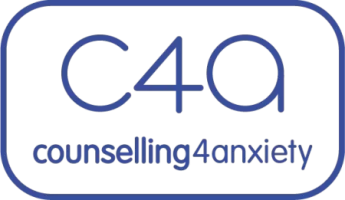Panic attacks can feel like a tidal wave of overwhelming fear and physical sensations. They can strike suddenly, leaving you gasping for air, dizzy, and disconnected from your surroundings. While they can be incredibly frightening, there are effective strategies you can develop to reduce their frequency and intensity, regaining a sense of control.
This blog will equip you with practical tools to manage panic attacks, both in the moment and in the long run. Remember, you are not alone in this journey. Millions experience panic attacks, and with the right approach, you can find relief.
Understanding the Panic Cycle
Panic attacks often stem from a misinterpretation of bodily sensations. A harmless increase in heart rate, for example, might be perceived as a sign of a heart attack, triggering a cascade of fear and physical reactions. This cycle feeds on itself, intensifying the panic attack.
The Power of Breathing
During a panic attack, shallow, rapid breathing becomes common. Here's where diaphragmatic breathing, also known as deep belly breathing, comes in. This technique sends calming signals to your body:
- Find a comfortable position, sitting or standing.
- Place one hand on your chest and the other on your belly.
- Breathe in slowly through your nose, feeling your belly inflate (not your chest).
- Hold your breath for a second.
- Exhale slowly through pursed lips, feeling your belly deflate.
- Repeat for several minutes, focusing on a slow, steady rhythm.
Grounding Techniques: Anchoring Yourself in the Present
When panic threatens to pull you under, grounding techniques offer a way back to the present moment. Here are a few to try:
- 5-4-3-2-1: Name five things you see, four things you can touch, three things you hear, two things you smell, and one thing you taste.
- Focus on an Object: Find a visually interesting object nearby. Notice its intricate details, colours, and textures. Describe it to yourself in detail. Try and remain in the present.
Mantras for Moments of Distress
Repeating a calming phrase or mantra can interrupt negative thought spirals during a panic attack. Choose a statement that resonates with you, such as:
- "This is temporary, and it will pass."
- "I am safe."
- "I am in control of my breath."
Progressive Muscle Relaxation
Tension often builds in the body during a panic attack. Progressive muscle relaxation involves tensing and relaxing different muscle groups, releasing pent-up tension and promoting relaxation. Here's a simple example:
- Tense your fists tightly for a count of five, then release completely. Notice the difference in relaxation.
- Repeat this with different muscle groups, working your way up from your toes to your head.
- Try and do this in a place where you can be seated and which is quiet.
Developing a Panic Attack Action Plan
Having a plan in place can empower you during a panic attack. Here's how to create yours:
- Identify Triggers: Reflect on situations or emotions that might trigger your panic attacks. Common triggers include public speaking, crowded spaces, and financial worries.
- Early Warning Signs: Notice the physical sensations or thoughts that typically precede a panic attack. This might be increased heart rate, sweating, or feelings of dizziness.
- Calming Techniques: List the coping mechanisms you'll use during a panic attack, such as deep breathing, grounding techniques, or mantras.
- Safe Space: Identify a safe space, either physical (a quiet room) or mental (a calming visualization).
- Seek Support: Include contact information for a trusted friend, family member, or therapist who can offer support during an attack.
Long-Term Strategies for Reducing Panic Attacks
While managing panic attacks in the moment is crucial, long-term strategies are vital for reducing their frequency and intensity. Here are some key practices:
- Cognitive Behavioral Therapy (CBT): This evidence-based therapy helps identify and challenge negative thought patterns that contribute to panic attacks. A therapist can guide you through CBT exercises.
- Mindfulness Meditation: Regular meditation trains your mind to focus on the present moment, reducing anxiety and improving emotional regulation. Many free guided meditations are available online and in apps.
- Regular Exercise: Physical activity releases endorphins, natural mood-boosters that can help combat anxiety and panic attacks. Aim for at least 30 minutes of moderate-intensity exercise most days of the week.
- Healthy Sleep Habits: Chronic sleep deprivation can worsen anxiety and panic attacks. Prioritize a consistent sleep schedule and develop a relaxing bedtime routine.
- Limiting Caffeine and Alcohol: These substances can exacerbate anxiety symptoms and disrupt sleep, making panic attacks more likely.
- Building a Support System: Talking to a trusted friend, family member,

